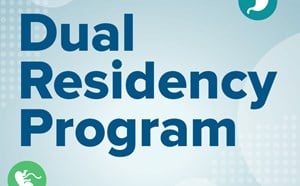
Discussion on EM/IM/CCM
With Michael C. Bond, MD, FACEP, Dr. Michael E. Winters, MD, FACEP, and Christian M. Coletti , MD, FACEP
The 2015 ACEP Dual Training Section meeting contained great discussion on several topics. One discussion point that garnered increased interest was increasing the availability of EM/IM/CCM tracks. After the meeting I had the opportunity to discuss with Dr. Michael Bond and Dr. Michael Winters, both from the University of Maryland, about the possibility of an outside EM/IM resident transferring into an EM/IM/CCM program to complete the 6th year fellowship.
Critical care medicine (CCM) has been a very common career path for graduates of EM/IM programs. Historically, one year fellowships in CCM were a possibility, but with recent changes to the American Board of Internal Medicine (ABIM) certification pathway, all CCM fellowships are now two- or three-year programs. An alternative to a two- or a three-year program is to enroll in one of four EM/IM programs (Henry Ford, University of Maryland, Long Island Jewish, and East Carolina University) that offer a 6-year track in EM/IM/Critical Care. Residents in this 6-year track are transitioned before the start of their PGY-4 year, and complete critical care rotations at the level of a critical care fellow during the PGY-5 and PGY-6 years.
Some EM/IM/CCM programs do not have a full complement of residents. Recently there has been interest in one resident potentially transferring from an outside 5-year EM/IM program into the University of Maryland (UMD), which does offer a 6-year EM/IM/CCM program. There are certainly many details to be worked out. The first question to be answered is when the new resident would transfer. Two options were outlined:
- The resident transfers in after completion of 5 years of training at the home institution. The applicant would apply for a position during their third year of training and if accepted would have to have their home curriculum tailored to meet the accepting institutions standards during their 4th and 5th years. The home institution should feel comfortable treating this applicant as a critical care fellow during their 5th year of training and NOT as another senior resident.
- The other option would be for the applicant to transfer to the accepting institution as a 5th year. This is likely not a viable option, as most home institutions would not be willing to part with their most highly trained senior residents.
Another critical question that must be answered is funding for the transferring resident. This will require further discussion.



